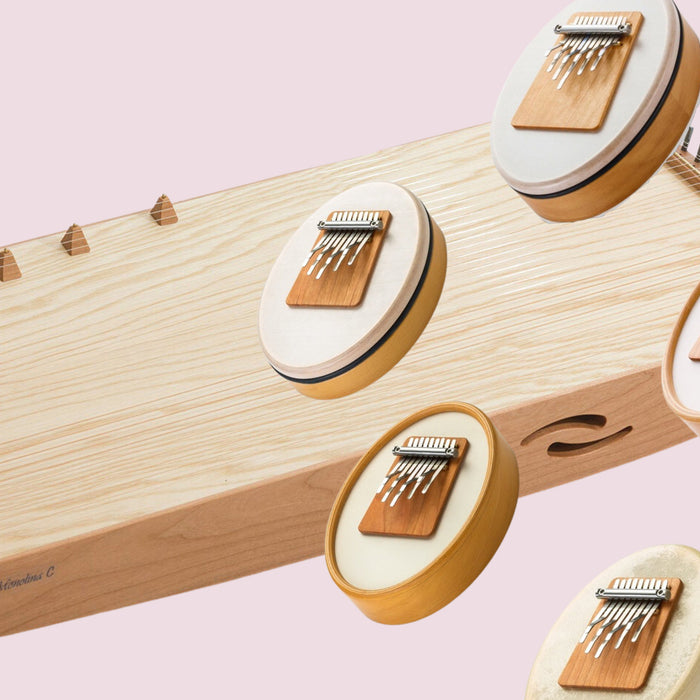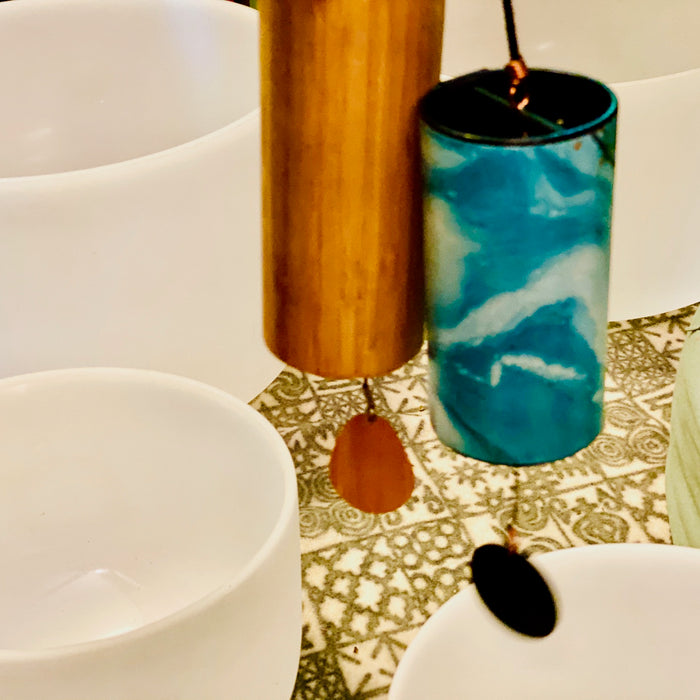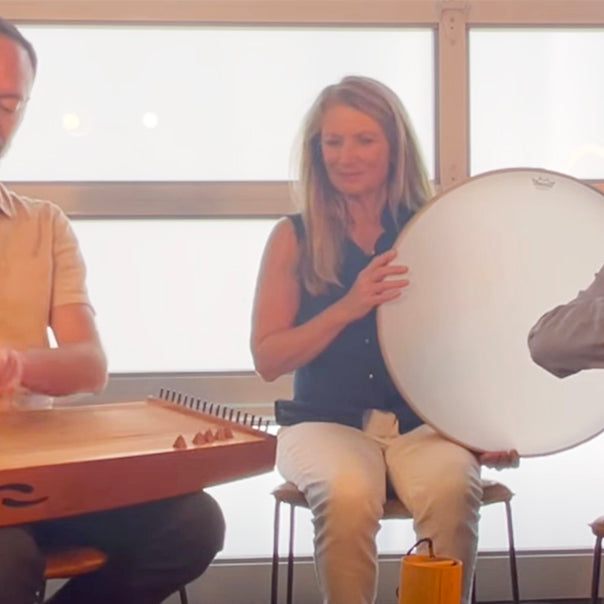
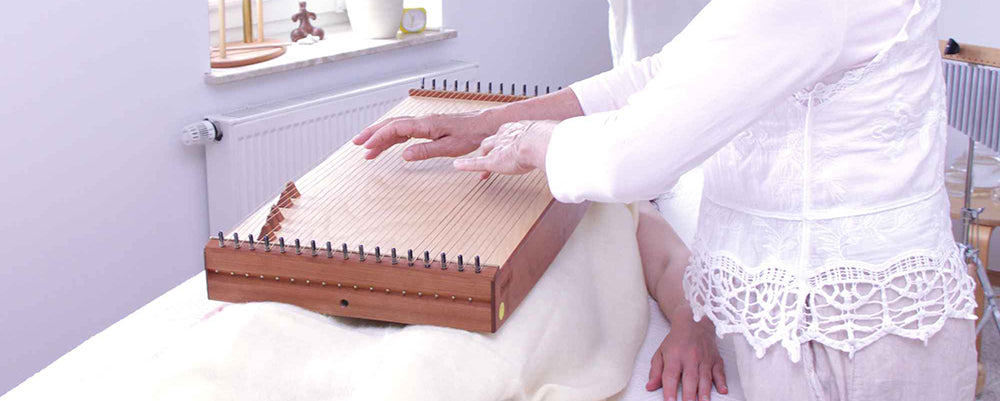
How to use a Monolina & Monolini Body Therapy Monochords for Sound Massage
This photo series shows you examples of how to place the "body monochords" - including the Monolini and the Monolina - onto the physical body for a sound massage session.

Because the feeltone Monochords have a convex shape, the instrument is like a boat that floats atop any size or shape body. Placing the monochord on the torso will allow the body to feel the vibrations most intensively. With the body in a supine position, the monochord can be placed horizontally or vertically across the body. We recommend a continuous playing style of strumming with a very light touch. As the sound is felt through the resonance of the wood, playing too robustly can be very invigorating! A gentle way of playing is recommended for most therapeutic applications, to entrain the breath and heart to a rate of calm and ease.

The instruments can also be placed on the lower body, where the sensations are felt up and down the legs and into the pelvis and hips.

With the body in a prone position, the monochord can be placed on the back and played. For some clients this intensifies the vibrations that are felt up and down the spine. Others may find the sensations to be more subtle when played upon the back body. This position can induce a deep state of relaxation.

Certain clients may find it more comfortable to lie upon their side, stretching out the back while the instrument is played whilst leaning up against the body. This can create a feeling of comfort if it's not easeful for them to lie on their stomach.

An incredible experience for many is when they feel the monochord played for the first time on the bottoms of the feet! These vibrations can be so powerful that it's best to offer a single strum played on the feet and then let the sound ring out for a bit (as continuous strumming on the feet may be too stimulating.)
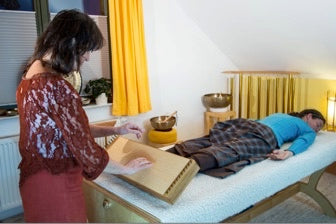
The monochord can also be played on the bottoms of the feet with the client in the prone position by propping the monochord up against the feet on an angle. This positioning allows the sound to travel up the body.

Finally, it's possible to play the monochord therapeutically for oneself! As it's not easy to be both active and passive at the same time, we recommend strumming the instrument on the in-breath, and then taking a moment to relax completely on the out-breath as the sound continues to vibrate. Only when the sound has decayed completely should one actively strum again, and then once again release to relax and receive. This can be a wonderful meditation experience where the instrument becomes like a duet partner.

How to chose the right Monolina or Monolini Body Monochord:
The Monolina and Monolini monochords are built to the same length but are of a different widths. The Monolini has 21 strings playing a root note, an octave and a fifth, and the Monolina has 34 strings in the same arrangement plus a set of 5 bridges that allow one to create melodic accents.
If you're looking for a versatile monochord that you'd like to play therapeutically as well as musically, the Monolina is the right instrument for you . Here you can listen to a series of short videos to compare the different Monolinas.
If you're mainly using your monochord as a drone to be played on the body for sound massage and are looking for a smaller more portable monochord the Monolini is right for you. Here are samples of the different Monolinis (note the Monolinis are the same tuning as the Monolinas - just a smaller size instrument.)
For both sizes of these monochords the A and C tunings are a bit higher and lilting with more audible overtones, whereas the G, F, and D tunings are lower tones with stronger physical vibrations experienced on the body. In this series, the D monochord is the lowest tuned instrument with the the most bass and and an earthy quality.
Our office is in California near San Francisco and we're working with different therapists, musicians, and music stores where you can experience our instruments all over the country.
Don't hesitate to give us a call 707-972 0196 or email us: gabriele@feeltoneusa.com and we're happy to answer questions, make suggestions and give you the information you need so you can find the right instrument for you.
We also offer a 30-minute personal Zoom setup session with the purchase of a monochord, repair services, and have replacement strings in stock. We have a thriving Monochord community with monthly free Zoom meetups, a content library, and intensive trainings one can attend if you're wanting a deeper dive on how to create overtones with these beautiful instruments.
Looking forward to connect with you and help you find your perfect feeltone Monochord Companion...
Your We Play Well Together Team!

